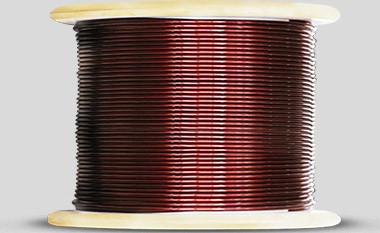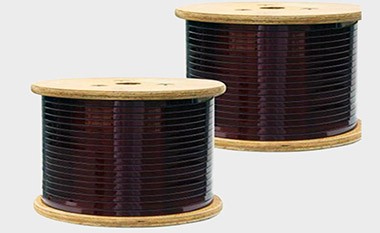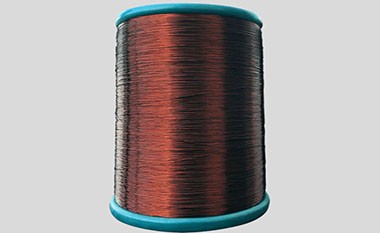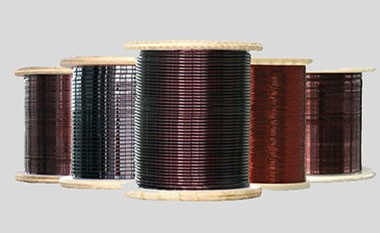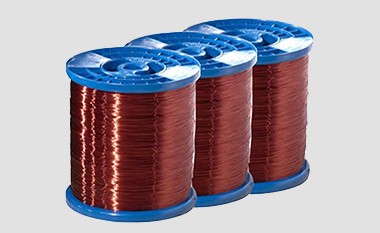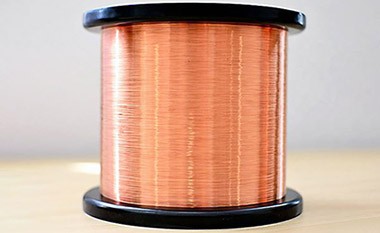Class 180 Enameled Aluminum Wire
Class 180 Enameled Aluminum Wire is specially designed for high-temperature applications, making it an ideal choice for industrial motors, high-efficiency transformers, and other equipment operating under intense thermal stress. The enameled insulation layer can withstand prolonged exposure to high temperatures, ensuring longevity and reliability.
Temperature Rating: 180°C
Class 180 Enameled Aluminum Wire is made from pure aluminum and insulated with polyimide. This enameled wire is used in transformers, motors, electrical equipment, and more.
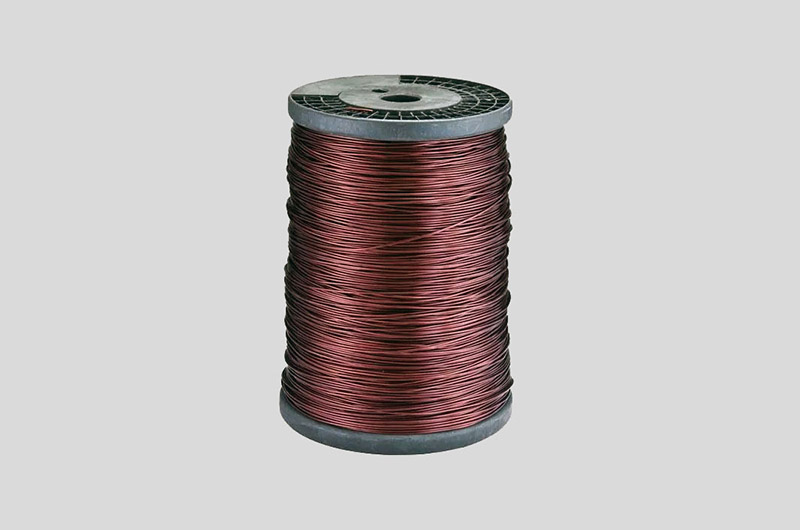
Material Properties of Class 180 Enameled Aluminum Wire
- Conductor Material: The Class 180 Enameled Aluminum Wire is made from high-purity aluminum, featuring good conductivity and lightweight characteristics. Compared to copper wire, aluminum wire is lighter at the same current, making it easier to install and use.
- Insulation Material: The insulation layer of this enameled wire is made from polyimide, which has excellent high-temperature resistance, allowing it to operate reliably and safely in high-temperature environments up to 180°C for extended periods.
HC Aluminum Class 180 Enameled Aluminum Wire Specifications
| Attribute | Description |
| Shape Type | Round Aluminum Wire and Flat Aluminum Wire |
| Insulation Material | EIW Polyimide |
| Heat Resistance Rating | 180°C (H) |
| Size | Round: 0.25-9.2 mm |
| Flat: 5-65 mm² | |
| Manufacturing Range | Ф0.10-6.00 mm, AWG 1-34, SWG 6~SWG 38 |
| Standards | NEMA, JIS, GB/T23312.5-2009, IEC60317-15 |
| Reel Type | PT15 - PT270, PC500 |
| Packaging Method | Pallet Packaging |
| Certification | UL, SGS, ISO9001, ISO14001, third-party inspection accepted |
| Applications | Transformers, Reactors, Generators |
HC Aluminum, as an experienced manufacturer of aluminum electromagnetic wire, offers wire gauges ranging from 0.25 to 9.20 mm and heat resistance ratings from 155 to 220°C. The Class 180 Enameled Aluminum Wire series is one of HC Aluminum's best-selling products.
Features of Class 180 Enameled Aluminum Wire
1. High Temperature Resistance
Insulation Design: The insulation layer of Class 180 Enameled Aluminum Wire is made from polyimide material, which has excellent high-temperature resistance. This material can withstand operating temperatures of up to 180°C, reducing the risk of insulation aging due to heat and thereby extending the cable's lifespan.
Heat Aging Resistance: The good high-temperature performance not only maintains insulation properties in hot environments but also reduces the risk of short circuits caused by overheating.
2. Corrosion Resistance
Superior Performance of Polyimide: Polyimide material exhibits excellent resistance to various chemicals, including oils, solvents, and other corrosive substances. This makes Class 180 Enameled Aluminum Wire particularly suitable for harsh environments, such as areas with high humidity or severe chemical corrosion.
Long-lasting Protection: The corrosion-resistant features not only enhance the wire's durability but also lower maintenance and replacement costs.
3. Good Electrical Performance
High Conductivity: Although aluminum's conductivity is lower than that of copper, the conductivity of Class 180 Enameled Aluminum Wire is close to that of copper wire. This means it can effectively conduct electricity with lower resistance, thereby improving the overall efficiency of devices.
Reduced Energy Consumption: High conductivity results in less energy loss, especially during long-distance transmission, helping to lower operational costs.
4. Lightweight
Density Advantage: Aluminum has a density about one-third that of copper, giving Class 180 Enameled Aluminum Wire a significant weight advantage. This characteristic makes installation and handling much more convenient.
Application Flexibility: The lightweight nature allows for reduced material burdens in the design and construction of equipment, facilitating lightweight designs and enhancing overall performance.
5. Other Features
Processing Performance: Aluminum is easy to shape and process during manufacturing, making the production process more efficient and able to meet various design requirements.
Cost-effectiveness: Compared to copper wire, aluminum wire generally has lower raw material costs and a higher cost-performance ratio, providing economic advantages to users.
Class 155 Polyesterimide Enameled Aluminum Wire
Class 155 Polyesterimide Enameled Aluminum Wire is primarily used as an insulated wire for electrical applications, especially in motors and transformers. Here are some main features and applications:
Main Features of Class 155 Polyesterimide Enameled Aluminum Wire: The wire is coated with polyesterimide, providing excellent heat resistance and electrical insulation properties. This enables it to operate at higher temperatures, typically rated for a maximum continuous temperature of 155°C.
| Product Model | Insulation Type | Thermal Class | Wire Gauge | National Standard | IEC Standard | NEMA Standard | Application |
| EIW/180-Round | Polyester-imide | 180℃ (H) | 0.25-9.2mm | GB1343-77 | IEC60815 | MW5-48 | Transformer, Reactor, Generator |
| EIW/180-Rectangular | Polyester-imide | 180℃ (H) | 5-65 mm² | GB1343-77 | IEC60815 | MW5-48 |
Applications of Class 180 Enameled Aluminum Wire
- 1. Electromagnetic wire for electronic transformers, dry-type power transformers, and high-frequency transformers.
- 2. Magnetic wire for reactors, instruments, motors, household motors, and micro motors.
- 3. Electromagnetic wire for household appliances and their accompanying motors.
- 4. Other windings with high heat resistance requirements.
Why Choose HC Aluminum?
- (a) Excellent thermal stability: The material maintains its physical and chemical properties in high-temperature environments without degradation or deformation.
- (b) Superior mechanical properties, such as low rebound rate and good scratch resistance: The material exhibits good toughness and wear resistance, capable of withstanding mechanical stress without damage. A low rebound rate means it can quickly return to its original shape after being stressed.
- (c) Good heat resistance, low-temperature resistance, and solvent resistance: The material remains stable under extreme temperatures and chemical environments, making it suitable for use in various harsh conditions.
- (d) Uniform insulation: The material has good electrical insulation properties, effectively preventing current from passing through, with insulation performance distributed evenly throughout.
- (e) High breakdown voltage: The material can withstand higher voltages without breakdown, making it suitable for use as electrical insulation material.

